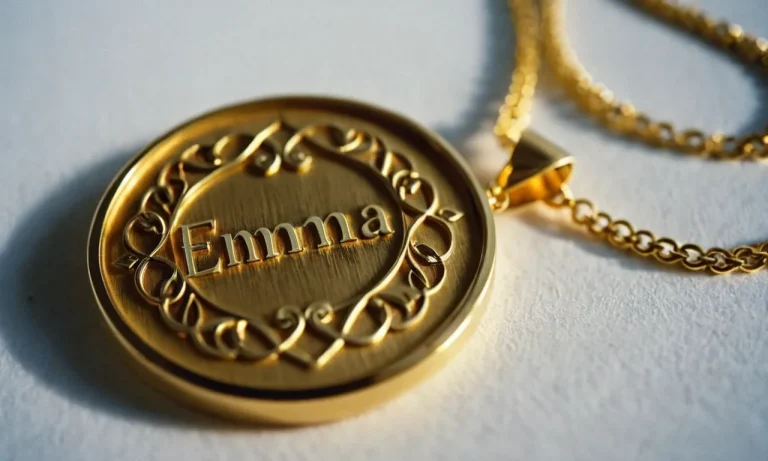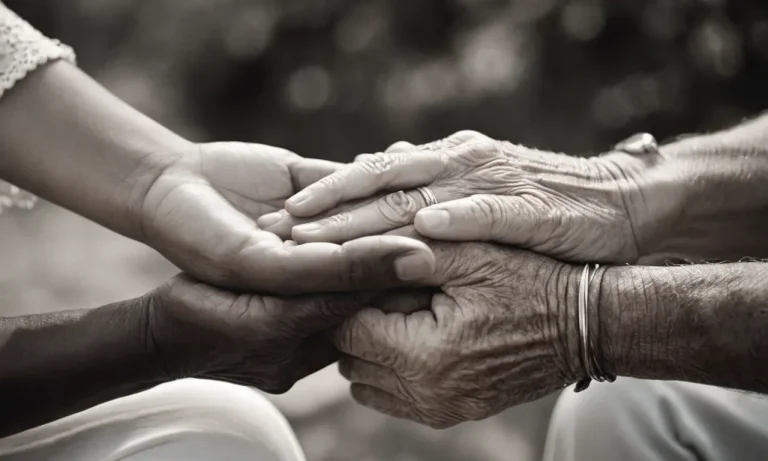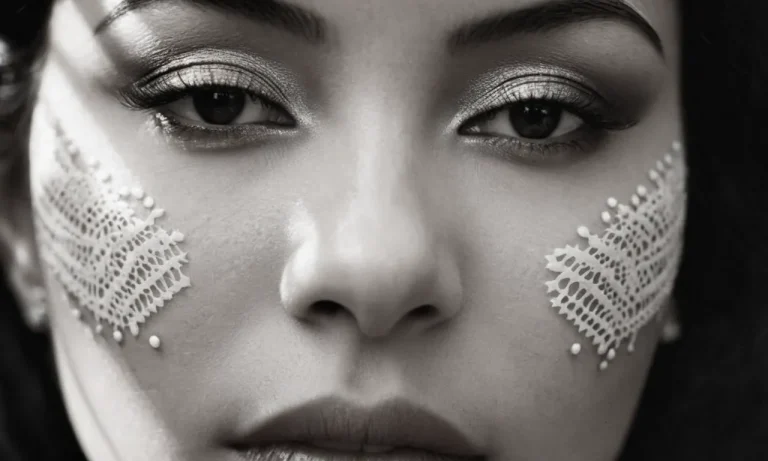The ubiquitous heart symbol is recognized worldwide as a representation of love and romance. But did you know that beyond its association with Valentine’s Day and affection, the heart shape carries deep spiritual symbolism as well?
If you’re short on time, here’s a quick answer: The heart is considered the center of being emotionally and spiritually. Historically, spiritual traditions have used the heart shape metaphorically to represent core human values like compassion, charity, wisdom and conscience.
In this comprehensive guide, we’ll explore the extensive symbolic history behind the familiar heart icon. We’ll look at how various faiths and cultures have endowed the heart visualization with sacred meaning over the ages.
From ancient mythology to modern religion, the heart shape has an enlightening story to tell.
Origins and Meanings of the Heart Symbol
Association With Life and Vitality
The heart shape has long been associated with love and romance, but its origins and symbolic meanings go much deeper. In many ancient cultures, the heart was seen as the source of life and vitality.
In ancient Egypt, for example, the heart was considered the source of emotions, memory, and intelligence. According to their beliefs, the heart was weighed against a feather after death to judge whether a person had lived a moral life.
If the heart was lighter than the feather, the person could enter the afterlife. This belief shows how the ancient Egyptians linked the heart to morality and spiritual purpose.
The ancient Greeks also saw the heart as central to life and consciousness. Aristotle believed it to be the first organ formed in the womb and the seat of the human psyche or soul. Over 2,500 years later, we still use phrases like “learn by heart” and “heartfelt thanks,” showing how this meaning still resonates.
Link to Emotions and Morality
By medieval times, the heart shape had begun to take on symbolic meanings related to love and romance. Courtly love poems and chivalric ballads personified the heart as housing powerful emotions like desire, longing, and affection. This meaning still shapes our conception of the heart symbol today.
When we speak of “affairs of the heart” or “follow your heart,” we are tapping into these deeply rooted cultural meanings.
More broadly, religions and philosophies have long seen the heart as the seat of morality and compassion. Biblical verses instruct us to “love the Lord your God with all your heart.” Buddhist teachings speak of cultivating a heart filled with loving kindness and compassion.
The heart’s symbolic link to core virtues spans many spiritual traditions.
So while today we are used to seeing stylized heart symbols on greeting cards and social media platforms, their origin story has profound depth. The heart shape may be whimsical and playful in the modern context, but its cultural roots connect us to the very essence of life, emotion, morality, and the human spirit.
The Heart in Ancient Belief Systems
Egyptian and Mesopotamian Religions
In ancient Egyptian religion, the heart played a pivotal role. Egyptians believed the heart was the center of a person’s being – their thoughts, emotions and morality all resided in the organ. During mummification, the heart was the only organ left inside the body because it was seen as essential for the journey to the afterlife.
Tales like the “The Tale of the Eloquent Peasant” showed the heart being weighed against the feather of truth and justice during judgment in the afterlife.
Mesopotamian myths like the Epic of Gilgamesh also featured many references to the heart’s importance – with metaphors and similes comparing men’s hearts to open places or homes for the gods to dwell in.
There was a shared cultural reverence for the heart as the seat of a person’s inner world across these ancient civilizations.
Greco-Roman Mythology
The heart held prominence in Greco-Roman myths as well. Greek goddess Aphrodite promised devotees divine favor in love, and the Romans adopted her as Venus, their counterpart goddess of love and beauty. She targeted lovers’ hearts with her bow and arrow, inducing desire and passion.
Figures like Odysseus and Dido tragically died of broken hearts when separated from their true loves. And the organ played a role in the iconic Greek myth of Prometheus – with an eagle sent by Zeus to eat the Titan’s perpetually-regenerating heart after he angered the god by giving fire to mankind.
Beyond the romantic realm, Greco-Roman tradition also viewed the heart as the source of emotions, thoughts and soul overall – being mortal while housing something divine or eternal within it at the same time.
Philosophers like Aristotle developed early theories of physiology placing great emphasis on the heart.
Celtic and Norse Faiths
In Celtic spiritual tradition, wearing an emblem of a heart showed devotion to the goddess and later evolved into a more general symbol of romantic love. We can find this in tales of great warriors attempting over-the-top feats to win their beloved ladies’ hearts.
The legendary Irish warrior Cú Chulainn made over-the-top romantic gestures to try winning Emer’s heart, for example.
In Norse mythology, the god Freyr was associated with romantic desire and fell deeply in love after catching sight of the beautiful giantess Gerðr. He became depressed to the point of incapacitation when his desires were thwarted.
And figures like the famous Sigurd from Norse legend suffered from literal broken hearts after being betrayed in love – implying a mythical belief that profound emotional wounds could physically manifest in the cardiac organ.
Judeo-Christian Tradition and the Heart
The Bible on Heart and Spirit
In the Bible, the heart is seen as the center of a person’s thoughts, will, and emotions. Many verses link the heart to a person’s “inner being” or “spirit” (Psalm 51:10, Proverbs 4:23). The condition of one’s heart is also connected to their moral and spiritual state.
For example, in Jeremiah 17:9 it says “The heart is deceitful above all things and beyond cure. Who can understand it?”. References to circumcising the heart symbolize the removal of impurities (Deuteronomy 10:16).
Overall, the biblical heart represents the core of human will and emotions, which impacts spiritual wellbeing.
Early Christian Use of Heart Iconography
In early Christian art, the heart symbol was used in various ways reflecting theological ideas. According to historians, the heart enclosed in a circle or series of rings represented Christ’s suffering on the cross. The rings symbolized the crown of thorns.
This type of iconography dates back to before the 4th century AD. By the middle ages, art including sacramental heart images emphasized blood and Christ’s sacrifice. Various visionary saints also started having experiences where they saw Jesus’ physical heart as a representation of divine love.
For example, Saint Lutgarde (1182-1246) had a vision of Jesus’ beating heart in midnight blue color. Over time, dotting flames around the heart became a way to visually describe mystical experiences of God’s love.
Catholic Devotion to the Sacred Heart
In Catholic tradition, devotion to Christ’s sacred heart officially started in the 17th century following the mystical visions of Saint Margaret Mary Alacoque (1647-1690). In her visions, she saw Jesus’ physical heart surrounded by a crown of thorns with rays of light and drops of blood flowing out.
This image became the basis for the modern Sacred Heart iconography. However, the roots of this devotion go deeper into medieval mystical theology on the woundedness of Christ’s heart suffering out of love for humanity. Over time this developed into a devotional focus on God’s divine love and mercy.
The devotion includes specific prayers and contemplative practices. For example, there is an Act of Consecration to the Sacred Heart where someone offers their whole self to God’s transforming love. Celebrating the Feast of the Sacred Heart on 19 days after Pentecost is another way people remember Christ’s love and mercy.
Overall, this devotion invites believers into a deeper relationship with Jesus. Images of his physical wounded heart inspire reflection on the depths of his sacrifice for humankind.
Heart Imagery in Eastern Spirituality
Hindu Chakra System
In the Hindu chakra system, the heart chakra (Anahata) is considered the center of love, compassion, and harmony with oneself and others. Located in the central region of the chest, it is represented by a green or pink 12-petalled lotus flower.
When balanced, the heart chakra allows one to give and receive love freely. However, when blocked, it can lead to feelings of loneliness, envy, hatred, and greed.
The symbol of the heart is intricately linked with the heart chakra as it deals with matters close to the heart. Opening and healing the heart chakra is said to awaken one’s ability to forge deep human connections. The heart is also seen as the seat of the Atman or soul in Hinduism.
Connecting with the heart allows one to look within and realize the true divine nature of oneself and others.
Buddhist Compassion
In Buddhism, the heart is seen as the source of compassion. The term “heart of enlightenment” refers to the genuine wish to attain Buddhahood for the benefit of all sentient beings. This altruistic intention forms the foundation of the Buddhist spiritual path.
The Buddha often used the example of a mother’s love for her child to describe the unconditional compassion that should be felt for all living beings. This caring heart allows wisdom and empathy to arise naturally.
Causing harm to others is said to harden one’s heart, while developing true compassion softens it. Buddhist imagery such as paintings or statues of the Buddha or bodhisattvas often depict them with a glowing red or orange heart representing love and wisdom.
Chinese Medicine and Philosophy
In Chinese medicine, the heart organ network includes not only physical heart functions but also houses the Shen or spirit. The fiery energy of the heart is believed to manifest mentally as joy and insight.
A healthy heart network results in strong willpower, clear thinking, and a peaceful, happy state of being. It enables deeper connections with others. On the other hand, an unbalanced heart can lead to excessive worrying, confusion, and feelings of isolation according to Chinese medicinal philosophy.
The Chinese character for heart 心 pictographically represents the heart inside an enclosure, indicating the heart’s essential role in both body and mind. Chinese culture also developed the art of qigong, which involves moving meditative exercises designed to improve Qi flow in the body.
Many qigong practices specifically focus on opening, softening, and strengthening the heart center.
Modern Applications of Heart Symbolism
Peace Movement
The heart symbol has been adopted by many peace movements over the past few decades. Protestors often carry heart signs with phrases like “Make Love Not War” or “Spread Peace” as a call for nonviolence and compassion.
Major peace events like the Million Mom March have used the heart symbol prominently. Data from the Global Peace Index shows that since 2008, the world has become more peaceful overall, with 93 countries improving in peacefulness (source).
The heart reminds us that peace starts from within through cultivating loving kindness towards all.
Environmentalism
Environmental groups use the heart symbol to signify love and respect for the Earth. Major events like Earth Hour and the People’s Climate March have featured heart images linked to care for the planet.
Countries around the world have been taking more action in recent years to protect habitats and reduce carbon emissions. As of 2022, over 165 countries have developed climate action plans (source). The heart is a reminder of our interconnectedness with all living beings.
Medical Field
The familiar heart shape is ubiquitous throughout the medical field as a symbol of health and healing. Hospital logos, medical credentials, even the Red Cross and American Heart Association all feature a stylized heart design. Anatomical heart icons represent cardiology departments specifically.
There have also been many advancements in recent years for detecting and treating heart conditions. Death rates for diseases like heart disease, stroke, and hypertension are down 50% or more since 1990 (source).
Medical technology continues to find new ways to repair, regulate, and support the physical heart.
Conclusion
Far more than just a visual shorthand for love, the heart shape carries layers of spiritual meaning forged through millennia of cultural history. In visionary art and sacred texts across the world, the heart visualization represents humankind’s highest ideals – our capacity for empathy, wisdom, conscience and transcendence.
The next time you see a heart symbol, consider taking a moment to reflect on its profound and hopeful symbolic message – one that speaks to the beauty of human spiritual potential.






